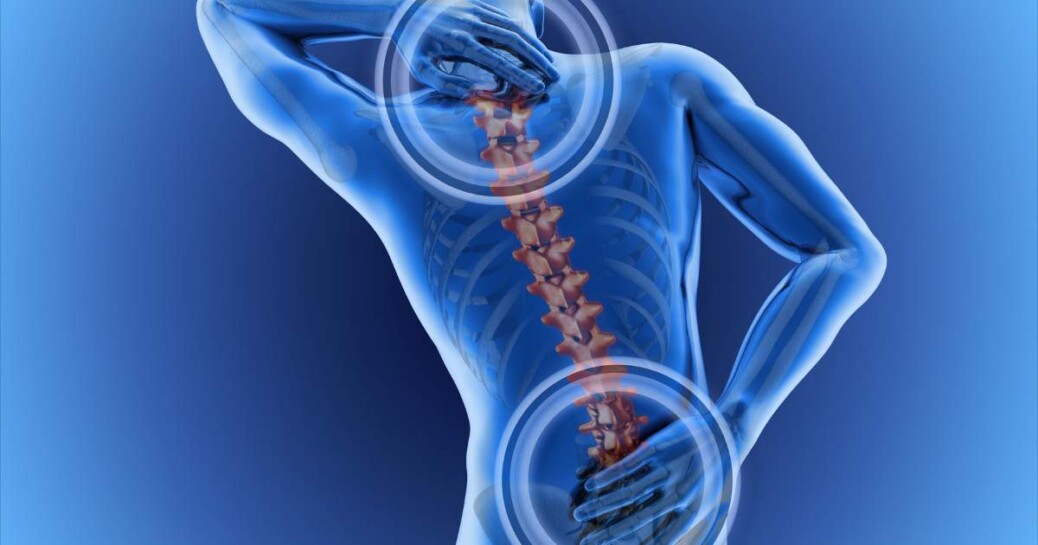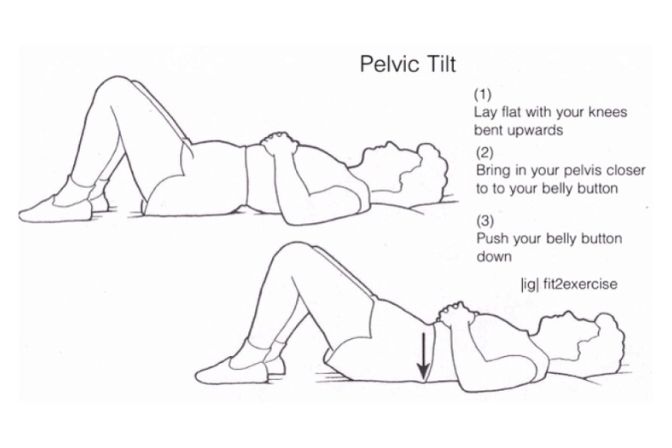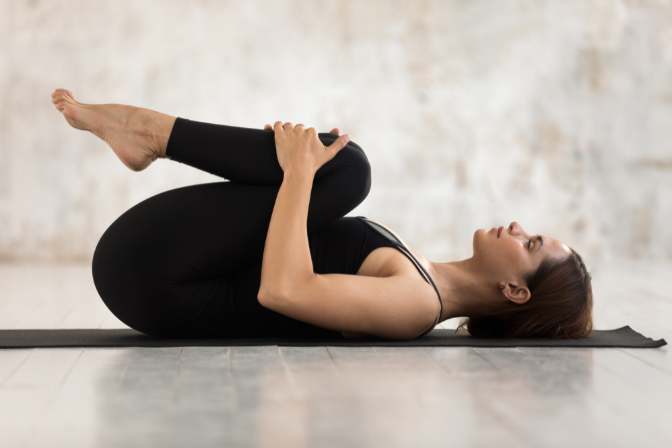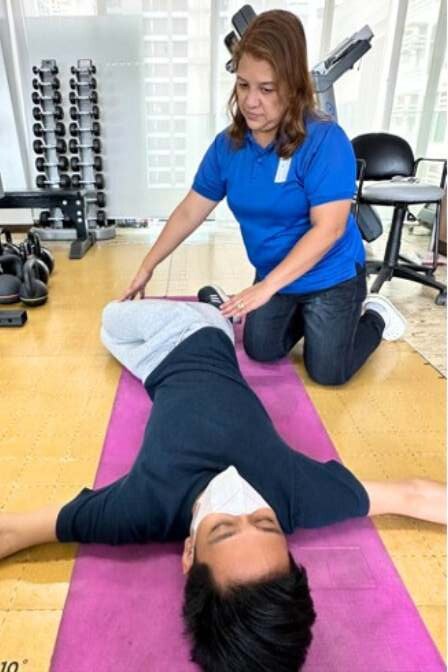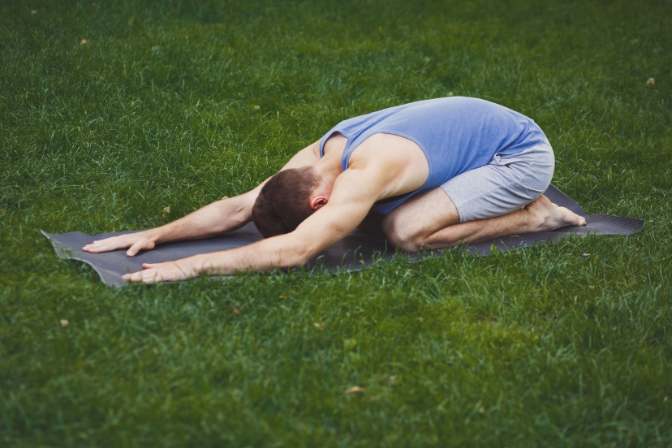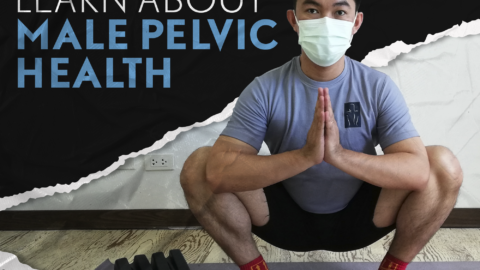Written by Cesaria Manalo
Back pain has a variety of symptoms. It can range from a muscle ache to a shooting, burning or stabbing sensation. It can be mild to severe. Low back pain may start suddenly, or it could start slowly and gradually gets worse over time. It can be a rather debilitating condition that affects our movement and quality of life.
Symptoms of Low Back Pain
Depending on the cause of pain, symptoms can be felt in many ways:
- Pain that is dull, localized in the low back
- Burning pain that radiates from low back to the back of the thighs and sometimes to the lower legs or feet.
- Muscle spasms or tightness in the low back, pelvis and hip.
- Difficulty standing up, walking or going from standing to sitting.
5 Exercises to Manage Low Back Pain
Pelvic Tilt
- Lie on your back with your knees bent and flat on the floor
- Flatten and push your low back into the floor by tightening your tummy and buttock muscles
- Bring in your pelvis closer to your belly button
- Hold this for 10 seconds. Repeat 5-10 times
Knee-To-Chest
- Lie flat on the floor
- Gently pull both knees towards your chest until a comfortable stretch is felt on your hips and low back
- Hold for this stretch for 10 seconds
- Repeat 5-10 times
Lumbar Rotation
- Lying with your knees bent, slowly rock both knees to one side while keeping your shoulders on the floor
- Take your knees as far as you can to the floor until a comfortable stretch is felt in your low back
- Hold for 5 seconds
- Repeat 10 times on each side.
Cobra
- On a firm surface, lie on your tummy and prop up on your hands (or elbow if this is too hard)
- Make sure to keep your pelvis on the floor and relax your legs
- Hold it for 10 seconds, then back to your tummy
- Push up again and repeat 10 times
Child’s Pose
- Start on all fours and move back so that you sit your buttocks on your heels
- Keep your hands outstretched in front of you and sink into the position feeling a stretch through your low back and arms
- Hold for 10 seconds and return to all fours
- Repeat 10 times
When Should You See a Physiotherapist
Any back pain that lasts longer than a week especially if it restricts your movement or aggravated by coughing and sneezing.
You should see a physiotherapist immediately if you feel any referred pain, which is pain that you feel in an area other than the site of the pain. For example, if the pain in your low back travels down to your legs please do consult a physiotherapist soon.
Any back discomfort that keeps coming back, this is usually caused by a specific area of tightness or weakness that can be resolved with the right treatment. This is not possible to diagnose without professional help, that is why a visit to a physiotherapist is a must.
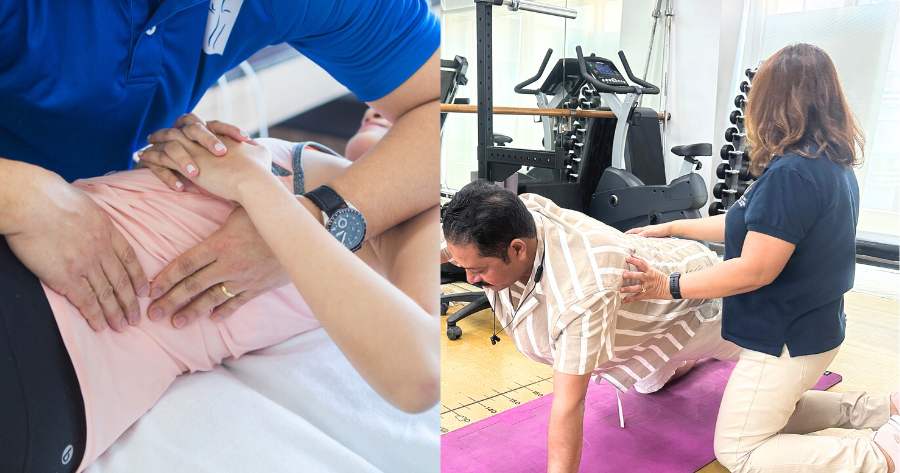
Need Help with Your Back Pain? Contact Our Physiotherapists Today
If you are experiencing any back pain or discomfort, whether it is from working at a desk job, from sports or any other situation, contact us today!
Our physiotherapists will work with you to identify the root cause of your back pain, and develop a customised treatment plan to help you recover optimally.
Telephone: (02) 7 793 8762
WhatsApp: 956 914 8260
Email: appt@sportsandspinal.ph

Written by: Cesaria Manalo
Cesaria is an experienced physiotherapist skilled in using a range of physical therapy techniques to improve mobility, flexibility, stability for a wide array of musculoskeletal conditions.
Her areas of interest and expertise include back pain, neck pain, occupational injuries, neuromuscular cases and women’s health conditions.
References
Rob Dickerman, DO,PhD, Neurosurgeon (2022), Physical Therapy for low back pain relief, Spine-health.com/treatment/physical-therapy/physical-therapy-low-back-pain-relief
JohnPeloza, MD, Ortho Surgeon (2017), Lower Back Pain Symptoms, Spine-health.com/condition/low-back-pain/low-back-pain-symptoms

